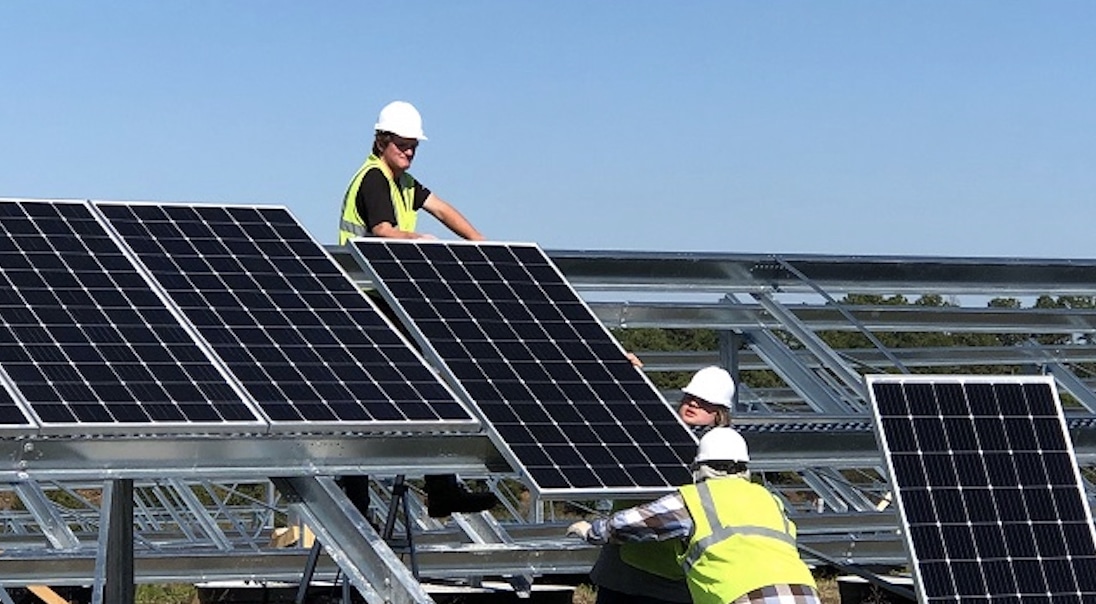Hang on tight: Solar is about to see five years of record-setting large-scale capacity additions.
That’s the outlook from BloombergNEF’s (BNEF) latest 1H 2021 U.S. Renewable Energy Market Outlook. It said that the next 10 years will see the U.S. solar and wind fleet almost triple, even as the pace of cost declines slows.
It warned, however, that this pace of growth will “still not be enough to hit the Biden administration’s stated goal of decarbonizing the power sector by 2035.”
The forecast said that tax credits for both solar and wind will allow large-scale projects that are commissioned by the end of 2025 to offer lower costs to end users than those in the second half of the decade.
It predicts that the U.S. is about to enter “five years of record large-scale solar capacity additions” at a pace of more than 20 GW each year. Both large- and small-scale solar will grow during the years that tax credit extensions are available.
Over the coming decade, customer-sited solar capacity is forecast to add on average more than 8 GW a year. Over one-third of all new systems are expected to be built in California. Energy storage is forecast to become a greater factor for project economics as net metering is phased out.
Solar capacity additions over the decade are forecast to hit 287GW, while wind adds 115 GW of capacity.
GAO highlights cyber weak spots
The U.S. grid’s distribution systems are increasingly at risk from cyberattacks. Distribution systems are growing more vulnerable, in part because their industrial control systems increasingly allow remote access and connect to business networks. As a result, threat actors can use multiple techniques to access those systems and potentially disrupt operations.
Those are the conclusions of a new report by U.S. General Accounting Office (GAO), which was asked to review cybersecurity issues related to the distribution network. It said the scale of potential impacts from such attacks on the distribution network is not well understood.
In March, pv magazine wrote that solar systems of all sizes could pose a risk to the grid in much the same way that an attack on a conventional power plant could result in widespread blackouts. The consequences of a cyberattack could be as minor as reducing a solar array’s power output, or as major as overloading a battery energy storage system to the point of failure. In a worst-case scenario, an intruder could initiate plausible, yet inappropriate commands that disable large portions of the grid.
The GAO report said that as the lead federal agency for the energy sector, the Department of Energy (DOE) has developed plans to implement the national cybersecurity strategy for the grid, but these plans do not fully address risks to the grid’s distribution systems. For example, the report said that DOE’s plans do not address distribution systems’ vulnerabilities related to supply chains.
According to officials interviewed for the report, DOE has not fully addressed such risks in its plans because it has prioritized addressing risks to the grid’s generation and transmission systems.
Market leader
Q CELLS said it held onto top market share in the U.S. residential and commercial solar module markets, according to the Q1 2021 U.S. PV Leaderboard report by Wood Mackenzie Power & Renewables. Q CELLS said it obtained 24.8% market share in the U.S. residential market for FY 2020, marking 10 consecutive quarters at the No.1 position. The Leaderboard report also ranked Q CELLS as the U.S. commercial market leader with a 19.1% market share, up from FY 2019.
National Solar Tour
The American Solar Energy Society (ASES) said that it National Solar Tour will take place virtually and in neighborhoods the weekend of October 2-3. The ASES National Solar Tour is a collection of local solar tours, as well as standalone solar sites across the country, and offers an opportunity for local solar advocates to share their solar story with others.
The deadline to sign up is August 15. More information is available here.
This content is protected by copyright and may not be reused. If you want to cooperate with us and would like to reuse some of our content, please contact: editors@pv-magazine.com.









By submitting this form you agree to pv magazine using your data for the purposes of publishing your comment.
Your personal data will only be disclosed or otherwise transmitted to third parties for the purposes of spam filtering or if this is necessary for technical maintenance of the website. Any other transfer to third parties will not take place unless this is justified on the basis of applicable data protection regulations or if pv magazine is legally obliged to do so.
You may revoke this consent at any time with effect for the future, in which case your personal data will be deleted immediately. Otherwise, your data will be deleted if pv magazine has processed your request or the purpose of data storage is fulfilled.
Further information on data privacy can be found in our Data Protection Policy.